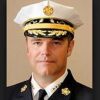As we end an eventful 2012 for the U.S. fire service, it’s natural to both reflect on the year that was, and spend a little time considering what 2013 might hold. I’m focusing here on five broader societal trends and their potential impacts on our departments, but this is far from an all-inclusive list.
Economy
While it appears obvious that the overall U.S. economy will remain a major challenge for local fire and emergency service organizations in 2013, as I’m writing this piece it’s hard to predict exactly what might happen next year.
Will the (slow) economic recovery we’ve been experiencing continue at the current rate or will it speed-up? Will we go over the dreaded fiscal cliff or will it be more like a fiscal bump?
Economists, politicians, and pundits disagree about the probabilities and outcomes of these (and other) scenarios, but it seems likely that we’re still trying to figure out the long-term effects of this “new normal” on fire departments across the nation.
Sustainability
As I predicted last year, the continued drive for sustainability across all aspects of the economy, including the so-called “green building movement,” is likely to affect fire departments in a number of ways.
I watched a television show yesterday about a house built entirely of reclaimed materials, including recycled aircraft wings for the roof (try venting that with a chainsaw). Certainly, that’s an extreme example, but the increasing prevalence of photovoltaic panels, lightweight construction materials, green roofs, emissions controls and other “green” features will likely require new training, tactics and code requirements.
Technology
It’s exceedingly obvious that technological advances will continue to affect, directly and indirectly, fire and emergency service organizations everywhere. How many of us could have predicted the daily use of unmanned aerial vehicles (drones), tablet computers or social media?
Yet, we still fight fires using a fairly traditional combination of extinguishing agents, equipment, appliances and protective gear. I guess the big question for 2013 is when, and whether, the fire service will positively benefit from a truly game-changing technological breakthrough?
Global climate change
While politicians continue debating why it’s occurring and what to do about it, scientists seem to have reached consensus that global climate change is real, and it’s happening now. Why should we care?
Well, the science appears to support our anecdotal experiences with more frequent, and devastating, natural disasters. Hurricane Sandy is the latest example, and there’s no question that local fire departments, and firefighters, were greatly affected before, during and after that event.
Violence
Firefighters and EMS providers are no strangers to violent incidents. Unfortunately, 2012 was a banner year for public violence in communities across the United States, culminating in the unthinkable Newtown, Conn., mass shooting and the Christmas Eve tragedy in West Webster, N.Y.
Whether perpetrated by ideologically motivated or lone-wolf terrorists (we can debate the term, but the outcome is the same), we know that local fire departments will be called to respond to such attacks in the future.
While I’m not sure we can ever be fully prepared for these events, the time is unquestionably right to have the conversation about how to handle them, in all our departments — regardless of size, type or location.
Please take a moment to remember those we lost in 2012, and have a safe new year.


